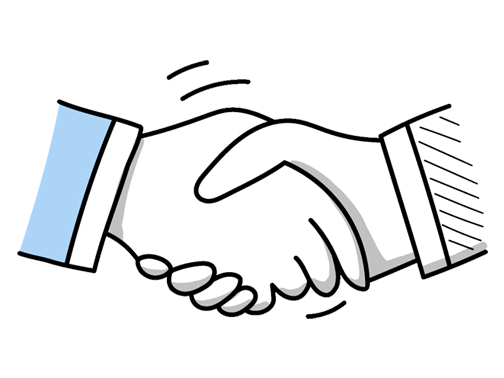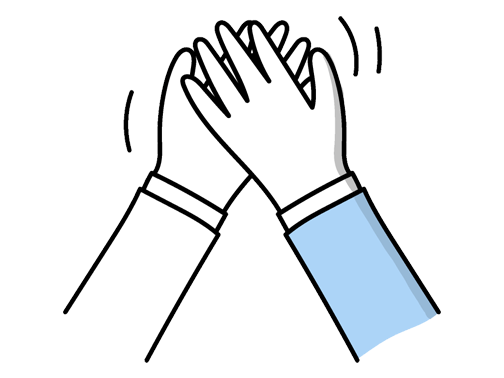Customer Service Supervisor Interview Questions (2025 Guide)
Find out common Customer Service Supervisor questions, how to answer, and tips for your next job interview
Practice Interviews Online - Identify your strengths and weakness in a realistic Customer Service Supervisor mock interview, under 10 minutes
Practice Now »Customer Service Supervisor Interview Questions
Interviewers ask this to see how you handle tough situations and maintain professionalism under pressure. You need to explain the context briefly, show empathy, and describe how you clearly and calmly delivered the message while focusing on the customer's needs.
Example: Certainly. Once, a customer’s order was significantly delayed due to supplier issues. I calmly explained the situation, acknowledged their frustration, and offered a clear timeline and a small goodwill gesture to make up for it. Being honest and empathetic helped maintain their trust and diffused the tension, turning a challenging moment into a positive customer experience.
This question assesses your ability to empower and collaborate with your team to find effective solutions. You need to say that you encourage open communication and actively seek input from team members to create a supportive environment for problem-solving.
Example: When a problem arises, I encourage open conversations so everyone feels comfortable sharing their ideas. I like to bring the team together, listen to different perspectives, and work collaboratively to find solutions. For example, during a recent customer complaint, we pooled insights from various roles and quickly identified a simple process change that improved response times. It’s about making sure everyone’s voice counts and feels valued in solving challenges.
Employers ask this to see how well you handle tense situations and resolve issues fairly while leading a team. You need to say how you listened to both sides, understood the problem, stayed calm, and helped everyone reach a fair solution.
Example: In a previous role, two team members disagreed on handling a customer complaint. I listened to both sides carefully, then helped them find common ground by focusing on the customer’s needs. We agreed on a solution that satisfied the client and improved our process. This experience showed me the value of staying calm and encouraging open dialogue to resolve conflicts productively.
Employers ask this to see if you proactively exceed customer expectations and solve problems effectively. In your answer, describe a specific example where you identified and addressed a customer's hidden needs, clearly communicated, and explain the positive results for the customer or business.
Example: In my previous role, a customer was upset about a delayed order just before a major event. I personally tracked the shipment, arranged express delivery, and kept the customer updated throughout. They were relieved and grateful, which strengthened their loyalty. It felt rewarding to turn a stressful situation into a positive experience, showing how attentive communication and swift action can make a real difference.
Questions like this assess your ability to lead change and handle resistance while keeping your team motivated. You need to explain the situation briefly, how you communicated the change clearly, involved your team, and ensured a smooth transition with positive results.
Example: In my previous role, we introduced a new scheduling system to improve shift coverage. I started by explaining the benefits clearly to the team and listened to their concerns. I organised a few hands-on sessions so everyone felt comfortable using it. By keeping communication open and supporting them through the change, we saw quicker adoption and smoother operations, which boosted overall team morale.
This question aims to see how you inspire and lead your team towards success. You need to say you use clear goals, positive reinforcement, and support to keep the team focused and motivated.
Example: I focus on understanding what drives each team member, and I set clear, realistic goals together. Celebrating small wins keeps motivation high, and I encourage open communication so everyone feels supported. For example, in my last role, recognizing daily progress boosted morale and helped us consistently hit targets without pressure. Creating a positive environment where people feel valued makes all the difference.
Questions like this assess your ability to manage conflict and maintain team cohesion. You need to explain that you listen respectfully to the team member’s perspective, consider their input, and then communicate your decision clearly while keeping the team’s goals in mind.
Example: When a team member disagrees with my decision, I listen carefully to understand their perspective. I find that having an open conversation helps, as it shows respect and might reveal something I hadn’t considered. For example, in a previous role, a colleague suggested an alternative approach to scheduling that improved our efficiency. Being open to dialogue not only builds trust but can lead to better outcomes for the whole team.
What they want to know is if you understand the key traits that lead to excellent customer service, like communication, patience, and problem-solving skills. You need to say that a good representative listens well, stays calm under pressure, and finds solutions quickly.
Example: I think the key qualities are patience and clear communication. A good representative listens carefully and stays calm, even when customers are upset. For example, I once helped a customer who was frustrated with a delayed order — by staying patient and explaining the next steps clearly, I was able to turn the situation around and build trust. Being adaptable and friendly also helps create a positive experience.
Employers ask this to see if you can recognize different audience needs and adapt your communication accordingly, which is key for effective leadership and service. You should explain how you change your tone and language for customers versus team members and give examples of successful outcomes from adjusting your style.
Example: When speaking with a diverse team or customers, I listen carefully to their needs and tailor my approach accordingly. For example, I might be more detailed and patient when supporting new staff, while being concise and solution-focused with experienced colleagues. This flexibility helps build trust and ensures messages are clear, making it easier to resolve issues and keep everyone on the same page.
Hiring managers ask this question to see how you measure success and continuously improve solutions in your role. You need to explain how you track KPIs like customer satisfaction, gather feedback from customers and team members, and make adjustments based on that data to ensure the solution remains effective.
Example: When implementing a solution, I track relevant metrics to see how well it’s working. I also invite feedback from both customers and the team to understand their experience. Based on this insight, I make adjustments to improve the outcome. For example, after introducing a new response protocol, I monitored resolution times and gathered staff input to fine-tune the process, ensuring it truly met our goals.
Interviewers ask this question to see how well you handle stressful situations and make effective decisions quickly. You need to briefly describe a specific situation, explain the decision you made, and highlight the positive outcome that resulted from your quick thinking.
Example: Certainly. In a previous role, a key team member called in sick just before a busy shift. Without hesitation, I quickly reorganised our schedule and stepped in to support the team directly. This helped maintain service levels and kept the team motivated. It was a clear moment where staying calm and acting decisively made a real difference to the customer experience.
This interview question aims to assess your ability to actively listen and clarify customer needs, which is crucial for effective problem-solving and satisfaction. You need to say that you use active listening, ask clarifying questions, and summarize the customer's points to ensure you fully understand their concerns.
Example: I focus on listening actively and asking clarifying questions to really get to the heart of what the customer needs. For example, if someone seems unsure, I’ll gently paraphrase their concerns to confirm I’m on the right track. This helps build trust and ensures I can provide solutions that truly fit their situation. It’s about being patient and attentive so the customer feels genuinely understood.
What they want to understand is how you approach difficulties and lead your team to solutions under pressure. Clearly describe a specific problem you encountered, explain the actions you took to address it, and briefly share the positive outcome to show your problem-solving and leadership skills.
Example: In a previous role, a sudden staff shortage left the team overwhelmed during peak hours. I reassessed shift patterns and delegated tasks based on individual strengths, keeping communication open throughout. This approach not only eased the pressure but also improved team morale. It taught me the value of flexibility and clear communication in turning a tough situation into a chance for growth.
Hiring managers ask this question to see how you proactively listen to customers and use their input to enhance service quality. You should explain how you collect feedback through surveys or forms, analyze trends to find improvement areas, and implement changes while tracking their effectiveness.
Example: I make it a point to listen to customers through surveys, online reviews, and direct conversations. By looking for common themes in their feedback, I can pinpoint where we’re doing well and where there’s room to improve. Once we make changes, like adjusting response times or staff training, I track the results to ensure the service truly gets better. For example, after introducing follow-up calls, we saw a notable increase in customer satisfaction scores.
Questions like this assess your problem-solving skills and ability to remain calm under pressure. You need to say you listen carefully to the customer’s concerns, empathize, and then work quickly to find a solution that satisfies them.
Example: When a customer is unhappy, I listen carefully to understand their concerns without interrupting. I stay calm and empathetic, showing I value their experience. Then, I work with the team to find a practical solution, explaining the steps clearly. For example, once a delayed order upset a customer, I arranged a quick replacement and kept them updated, which helped turn their frustration into appreciation.
Questions like this assess your ability to simplify complex information and connect with your audience effectively. You need to describe how you used clear language, adapted your message to the listener’s understanding, and anticipated their questions to resolve the issue smoothly.
Example: In my previous role, I had to explain a system outage to both tech teams and customers. I broke down technical jargon into simple terms for customers while providing detailed info to the tech team. By anticipating questions, I addressed concerns early, which kept everyone calm and informed. This approach helped resolve issues faster and maintained trust throughout the process.
What they want to know is how you actively support your team’s growth to improve performance and morale. You should say you identify individual needs through regular one-on-one meetings, create personalized development plans like targeted coaching, and keep the team motivated with ongoing feedback and encouragement.
Example: I believe in getting to know each team member’s strengths and areas for growth through regular one-to-ones and feedback. From there, I work with them to create personalised development plans, whether it’s shadowing a colleague or online courses. I also encourage a culture where learning is part of our daily routine, celebrating progress and sharing new skills across the team to keep everyone motivated and growing together.
What they want to see is that you understand the importance of managing expectations to maintain customer satisfaction and trust. You need to explain that you listen carefully, empathize with the customer, and clearly communicate what is possible while offering alternative solutions.
Example: When a customer has unrealistic expectations, I listen carefully to understand their concerns and then gently set clear, achievable boundaries. For example, if someone expects immediate resolution on a complex issue, I explain the process and timeline transparently. This builds trust and helps manage their expectations while showing that I’m committed to finding the best possible solution.
This question aims to assess your leadership and problem-solving skills when addressing team challenges. You need to explain that you identify the root cause of underperformance and work collaboratively with the employee to set clear goals and provide support for improvement.
Example: When I notice underperformance, I start by having a straightforward conversation to understand any challenges they’re facing. I focus on offering support, whether it’s extra training or clearer goals. For example, one team member once struggled with call handling times—I worked with them on prioritising tasks, and their performance improved steadily. It’s about encouragement and practical help rather than just pointing out faults.
Hiring managers ask this question to see if you approach problems methodically and can resolve issues effectively. You need to explain that you gather information, analyze the data to find underlying causes, and involve your team to ensure the real problem is addressed, not just the symptoms.
Example: When I encounter a problem, I start by gathering all relevant information and listening carefully to the team and customers involved. Then, I look for patterns or recurring issues that might point to the underlying cause. For example, if multiple customers report the same delay, I’d check our processes to see where breakdowns happen. It’s about staying curious, involving the right people, and addressing the real issue, not just the symptoms.
Hiring managers ask this question to see if you can maintain clarity and prevent misunderstandings in your team. You need to say that you establish regular check-ins and encourage open dialogue to keep everyone informed and aligned.
Example: I focus on keeping communication open and straightforward, encouraging team members to share updates or concerns without hesitation. Regular check-ins help us stay aligned, and I make sure information is clear, whether it’s through quick huddles or written notes. For example, when we introduced a new system, I organised brief sessions to walk everyone through, making sure questions were addressed right away. This approach keeps the team connected and informed.
Employers ask this to see how you manage time and resources effectively while ensuring team productivity. You need to explain that you assess urgency and importance to prioritize tasks, then delegate based on each team member’s strengths and workload.
Example: When managing tasks, I assess urgency and impact first, focusing on what helps customers most. I know my team’s strengths, so I assign duties accordingly—like having a detail-oriented colleague handle follow-ups while others manage live queries. Regular check-ins help me adjust priorities and support the team, ensuring everything runs smoothly without overwhelming anyone. It’s about balance and clear communication to keep service consistent.
Employers ask this question to see how you lead and maintain high-quality customer service within your team consistently. You need to explain that you set clear service standards, support and motivate your team through regular coaching, and monitor performance using feedback to address issues proactively.
Example: To keep the team delivering great customer service, I make sure everyone understands what excellent looks like from the start. I stay involved by offering regular feedback and encouragement, celebrating wins, and addressing challenges early. For example, if response times slip, I jump in to coach or adjust workloads so the team stays on track and customers always feel valued.
Questions like this assess your conflict resolution skills and ability to maintain a positive team environment. You need to explain the situation briefly, describe how you listened to both sides and facilitated a solution, and highlight the positive outcome.
Example: In a previous role, two team members disagreed over task responsibilities, which affected their collaboration. I brought them together to openly discuss their concerns, helping each understand the other’s perspective. By encouraging clear communication and setting shared goals, they rebuilt trust and improved their teamwork. This experience reinforced the importance of addressing issues early and fostering an environment where everyone feels heard.
Hiring managers ask this to see if you can handle disputes effectively and maintain a positive work environment. You need to explain that you listen actively, address concerns fairly, mediate impartially, and implement follow-up strategies to prevent future issues.
Example: When conflicts arise, I first listen carefully to understand everyone’s perspective. I encourage open communication to find common ground and agree on practical solutions together. After resolving the issue, I follow up to ensure the solution sticks and to prevent similar problems. For example, when a team disagreement affected service, we held a quick meeting to clarify roles, which improved cooperation moving forward.
Ace your next Customer Service Supervisor interview with even more questions and answers
Common Interview Questions To Expect
The interviewer is looking for a candidate to demonstrate their qualifications, skills, experience, and enthusiasm for the role. Answers should highlight relevant strengths and how they align with the job requirements.
Example: You should hire me for this position because I have over 5 years of experience in customer service and have successfully supervised a team in my previous role. I am highly organized, detail-oriented, and have a strong passion for providing excellent customer service. I am confident that my skills and experience make me a great fit for this role.
The interviewer is looking for you to highlight your key skills, qualities, and experiences that make you a strong candidate for the role. Be specific and provide examples to support your strengths.
Example: My biggest strengths are my excellent communication skills, my ability to problem-solve quickly, and my strong attention to detail. For example, in my previous role, I was able to resolve customer complaints efficiently and effectively, resulting in a high level of customer satisfaction. I also pride myself on my organizational skills, which allow me to prioritize tasks and meet deadlines consistently.
The interviewer is looking for insight into your long-term career aspirations, your motivation, and how this role fits into your overall career plan. Be honest and specific about your goals and how they align with the company's objectives.
Example: My career goal is to continue growing in the customer service field and eventually become a Customer Service Manager. I am motivated by helping customers and solving problems efficiently. I believe this role as a Customer Service Supervisor will help me gain the necessary experience and skills to achieve my goal.
Candidates can answer by stating a specific salary range, mentioning their flexibility, or asking about the company's salary range. Interviewers are looking for candidates who are realistic, confident, and have done their research on industry standards.
Example: I'm looking for a salary in the range of £25,000 to £30,000, but I'm open to negotiation based on the overall compensation package. I've done some research on industry standards and believe this range is fair for my level of experience and skills. Can you provide me with more information on the company's salary range for this position?
The interviewer is looking for how you handle feedback and criticism, your ability to reflect on your work, and how you have used criticism to improve your performance. You can answer by discussing a specific situation, your reaction, and the outcome.
Example: Sure! One time, a customer complained about the way I handled their issue, saying I was too slow in resolving it. I took the feedback seriously, apologized to the customer, and made sure to improve my response time in the future. As a result, I became more efficient in handling customer inquiries and received positive feedback from other customers.
Company Research Tips
The company's official website is a goldmine of information. Look for details about the company's history, mission, vision, and values. Pay special attention to the 'About Us', 'Our Team', and 'News' sections. These can provide insights into the company culture, key personnel, and recent developments. For the role of Customer Service Supervisor, understanding the company's customer service philosophy and approach would be particularly useful.
Tip: Don't just skim through the website. Take notes and think about how the information you find aligns with your skills and experiences.
Social media platforms like LinkedIn, Twitter, and Facebook can provide valuable insights into the company's culture and values. Look at the company's posts, interactions with customers, and employee comments. For a Customer Service Supervisor role, pay attention to how the company interacts with its customers and handles complaints or issues.
Tip: Look for patterns in the company's posts and interactions. This can give you a sense of their priorities and values.
Understanding the company's competitors can give you a broader view of the industry and the company's position within it. Look for news articles, reports, or industry analyses that compare the company to its competitors. For a Customer Service Supervisor role, understanding the competitive landscape can help you discuss strategies for customer retention and satisfaction.
Tip: Try to understand the company's unique selling proposition (USP) - what sets them apart from their competitors. This can help you articulate how you can contribute to their success.
Glassdoor provides insights into the company from an employee's perspective. You can find information about the company culture, salary, benefits, and interview experiences. For a Customer Service Supervisor role, look for reviews from customer service employees to get a sense of the work environment and challenges.
Tip: Take the reviews with a grain of salt. They are individual experiences and may not represent the overall company experience.
What to wear to an Customer Service Supervisor interview
- Opt for a business casual attire
- A neat, ironed shirt or blouse
- Pair with tailored trousers or a skirt
- Choose dark, neutral colours
- Wear clean, polished shoes
- Avoid flashy jewellery or accessories
- Ensure your hair is neat and tidy
- Light makeup for women is acceptable
- Avoid strong perfumes or colognes
- Carry a professional bag or briefcase





